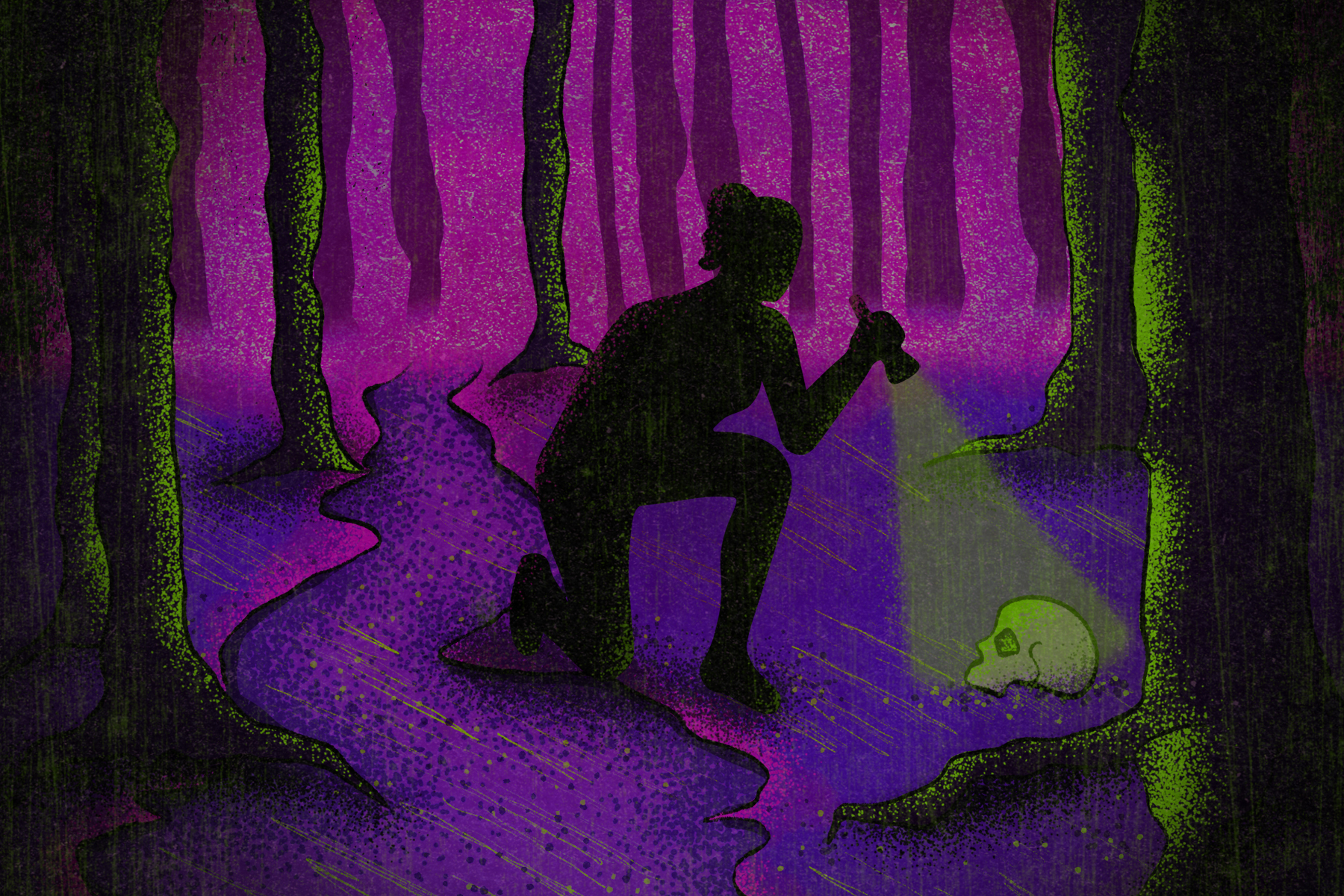When it comes to page-turning reads, there’s nothing quite like a good old-fashioned murder — fictional, of course. The mystery genre has long been a foundational part of popular literature, as readers can’t get enough of clever detectives solving seemingly impossible cases. Contemporary detectives might look a lot different than Sherlock Holmes or Hercule Poirot, but they’re all part of the same tradition. Maureen Johnson’s young adult (YA) murder mystery “The Box in the Woods,” released June 15, builds on the literary form with her teenage sleuth, Stevie Bell.
“Truly Devious”
Stevie’s career as an amateur detective began in the “Truly Devious” trilogy, which is composed of three titles: “Truly Devious,” “The Vanishing Stair” and “The Hand on the Wall.” The story begins with Stevie’s acceptance into the fictional Ellingham Academy, a prestigious private high school in Virginia for “the brightest thinkers, inventors and artists.” There, Stevie takes on a project that involves solving a notorious century-old crime.
As the story goes, Albert Ellingham’s wife and daughter, as well as a student, were all kidnapped soon after he opened his academy. Though the wife’s and student’s bodies were recovered, the daughter’s never was. All that was left was a cryptic ransom note signed “Truly, Devious,” and rumors of a vast fortune promised to whoever found Ellingham’s daughter. While at school, Stevie meets a group of friends, investigates the murder and finds herself in real danger. All three “Truly Devious” novels are New York Times Best Sellers, cultivating an audience of avid readers and establishing Stevie Bell as a force to be reckoned with.
“The Box in the Woods”
“The Box in the Woods” takes the “Truly Devious” gang and places them in a new environment: summer camp. It’s a staple location in classic horror and murder mysteries, and it provides the perfect mixture of fun and fear for the new case.
Stevie’s now-famous detective skills are requested at Sunny Pines summer camp. Formerly Camp Wonder Falls, the site was the location of a brutal quadruple homicide in 1978 when four camp counselors were murdered in the woods. While one body was found on a path just outside camp, the other three were left in a hunting blind in the woods with the word “Surprise” painted in white above them.
The case was never solved, and the camp’s current owner wants Stevie to investigate so that he can release a true-crime podcast. Looking for a way out of her insufferable summer job at a deli counter, Stevie agrees on the condition that her two closest friends from Ellingham, Janelle and Nate, can come with her. However, it soon becomes apparent that someone is trying to stop Stevie from finding the truth, and her summer camp experience turns dangerous.
The Detective Genre
“The Box in the Woods” is aware of its place within the illustrious history of detective literature. For starters, it actively employs a lot of common tropes like the inefficacy of the police force. In Doyle’s “A Study in Scarlet,” Holmes states, “There is no crime to detect, or, at most, some bungling villainy with a motive so transparent that even a Scotland Yard official can see through it.” Throughout his adventures, the police are regularly portrayed as incapable of doing what Holmes can do. Similarly, the police in Stevie’s story mishandle evidence and even expedite investigations when it is the mayor’s son who might be the guilty party. It’s Stevie’s job to succeed where they failed.
The book is also consistently self-referential. One passage explains, “In many of the murder mysteries Stevie loved, the detective would gather the suspects in a room, then explain who didn’t do it before getting to who did.” In another scene: “People in mystery and suspense novels were always talking about how their heart was in their throat.” Cleverly, Johnson directly acknowledges her use of tropes, but she also subverts them.
Review
“The Box in the Woods” gives readers a modern take on the classic detective story. Firstly, it includes representation that the majority of its predecessors lacked altogether. Primary characters include people of color, nonbinary students and numerous queer-identified individuals. There’s also a distinct sense of class consciousness as Stevie comments on the privilege of those around her.
Stevie is a unique detective. She’s not always confident in herself and, despite having solved the Ellingham case, experiences imposter syndrome. She has anxiety and is open about taking Ativan to treat it. Unlike classic detectives, she is not described as being at the height of physical fitness; in one scene, she’s completely out of breath after riding her bike across town.
However, Stevie is great at what she does. She loves puzzles and locked room mysteries, and describes her investigative process by saying, “Part of working a case is knowing what to take in and not getting distracted or overwhelmed by the hugeness of the world and its innumerable rabbit holes.” She’s intelligent, strong, independent and a great friend. She can also be absentminded, selfish and flawed. She is a fully round character, and she’s fiercely dedicated to doing the right thing. When asked why she decided to come to town, Stevie asserts, “Because people need answers. Because someone should do something.”
Johnson’s newest venture proves her an expert at crafting a mystery. She deftly intertwines compelling characters with quirky settings and an abundance of tension to keep readers guessing until the very end. While “The Box in the Woods” gets off to a slow start, that’s likely just a side effect of grappling with a “Truly Devious”-sized case in one book instead of three. After the necessary exposition, the pace picks up, and Johnson’s trademark twists and turns take center stage. One of her greatest draws is the ability to create an ending that is both shocking and makes readers feel foolish for not guessing it sooner, and she undoubtedly achieves that here.
Perhaps most importantly, “The Box in the Woods” holds an awareness of the power of storytelling. As Stevie questions in regard to a statue of a slave-owner standing proudly at the center of Barlow Corners, “But people build myths, right? Tell the story enough times and it becomes true. John Barlow must be a hero — he has a statue.” In a genre with roots that are so homogeneous, with nearly every detective looking like the same straight, white, genteel man, it’s necessary to recognize the importance of who is given a voice. Whether it’s a classic detective story or a YA murder mystery, who’s telling the story matters. And Stevie Bell is a step in the right direction.

















